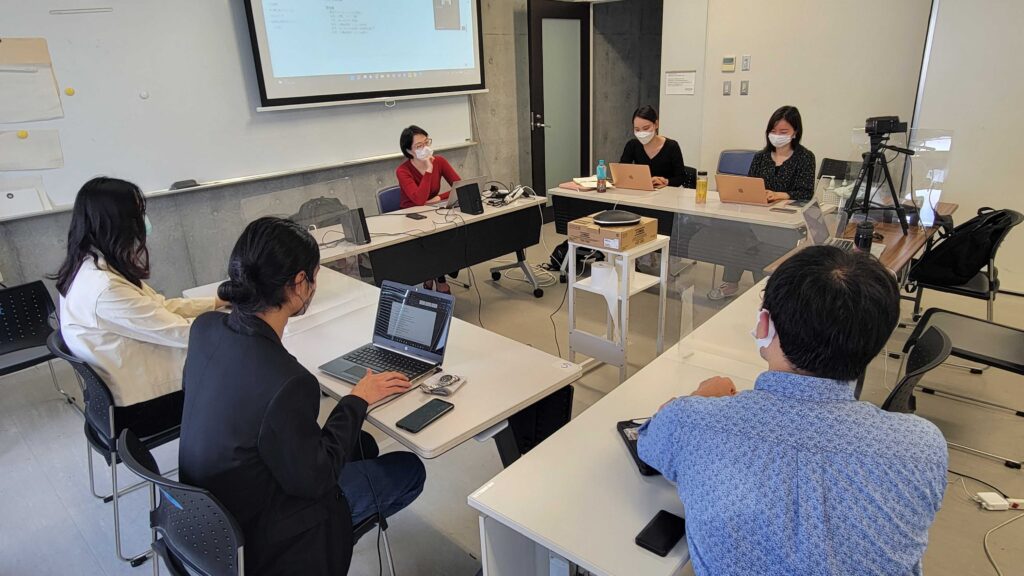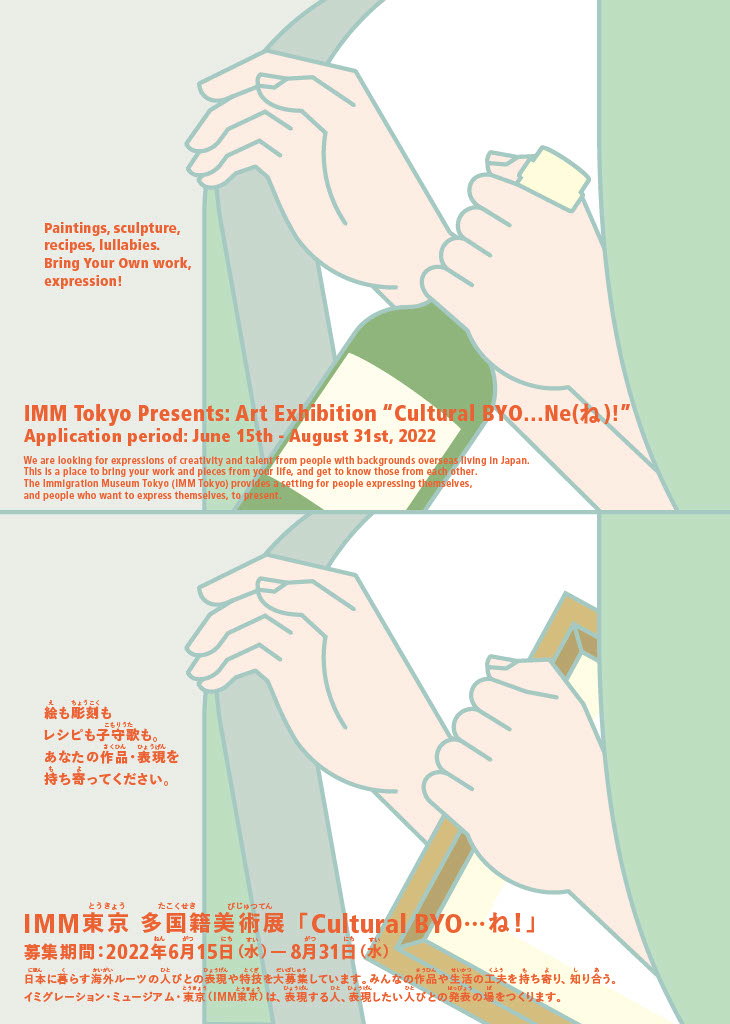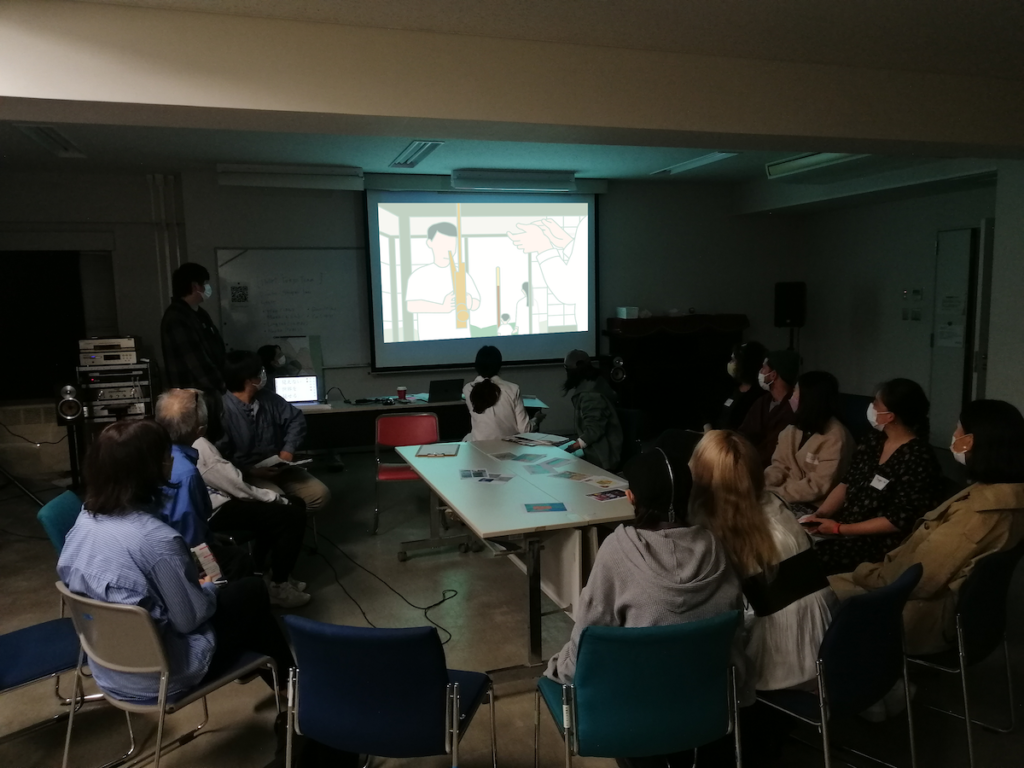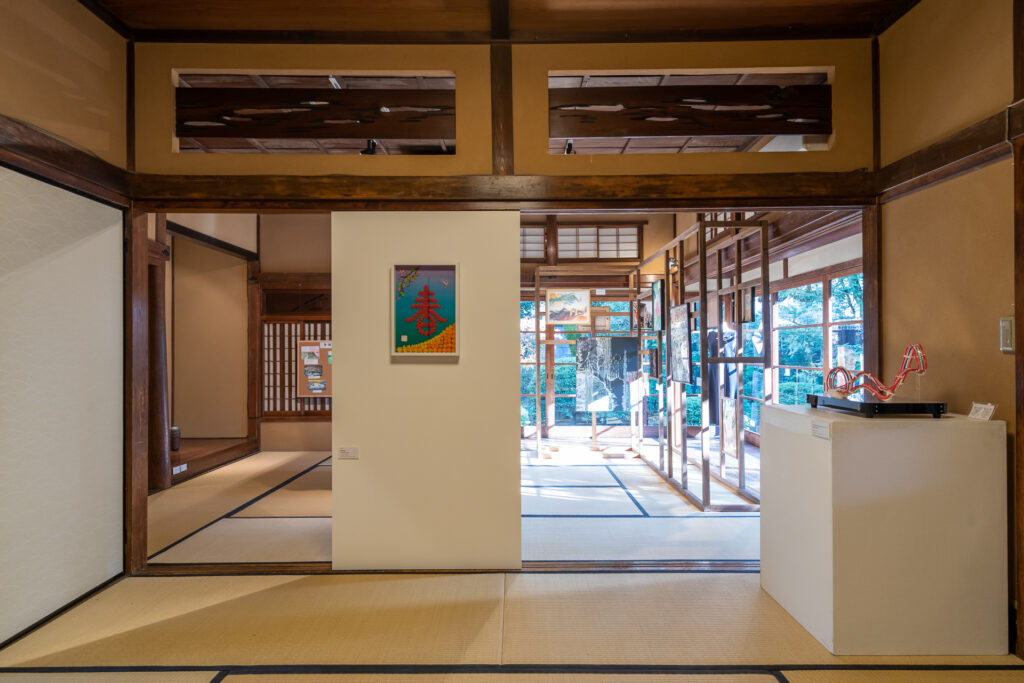The Art Exhibition “Cultural BYO…Ne!”
Imagining though layering each other’s perspectives and creative expressions
Text=Harah Han
(Planning Supervisor, Immigration Museum Tokyo)
The Art Exhibition “Cultural BYO…Ne!” brings together the artwork and creative expressions of people with roots overseas who live in Japan. The exhibition attempts to gather and exhibit all these artworks and creative expressions under the concept of “BYO,” or “bring your own,” as a wide, open call. After its first installment in the previous year, this exhibition was held a second time in the fiscal year 2022. This report focuses on the process leading up to the opening of this multinational art exhibition.
Why and how we held an open call for creative expressions
At the start of spring, when a chill still lingered in the air, Director Iwai and a team of staff with diverse roots at Immigration Museum Tokyo (“IMM Tokyo”) began preparations for this exhibition. Reflecting on the exhibition in the previous fiscal year 2021, the team regretted not being able to show all the submitted artworks at the venue and felt that interactions between artwork contributors and with the IMM Tokyo team were scarce.
With these thoughts in mind, the team began discussing what was important to IMM Tokyo by returning to the reason we held an open call in the first place. What became clear was that we did not want to judge the quality of the artwork. We wanted to encounter those with roots overseas who enjoyed expressing themselves and who did so with a bit of a fighting spirit. We also wanted to create a place where such people could feel a sense of solidarity with each other here in Japan.
Further, with Director Iwai’s desire to welcome any form of expression as long as it incorporated the person’s creative ingenuity, we established a new “Creative Life” category—in addition to our usual “Artwork” category—to make space for intangible contributions such as customs and performances. To encourage submissions from those unaccustomed to the application process, we redesigned that process through trial-and-error, making the application form as simple as possible and supporting applications in multiple languages.


Seeking harmony between a Japanese house, the artworks, and creative expressions
The long-awaited result of our two-and-a-half-month open call was a total of 70 submissions over 58 applicants. The IMM Tokyo team was impressed by the passion conveyed in each application. Following up on an idea from the springtime, we held an “Applicant Briefing Session” so that applicants and the IMM Tokyo team could get to know each other. In addition to explaining the aims of IMM Tokyo and the Art Exhibition, we looked at images of the applicants’ works while asking about their creative approaches. It was a valuable moment when the IMM Tokyo team and applicants could meet for the first time and share their ideas and expectations for the Art Exhibition.

The exhibition venue was a 100-year-old Japanese house called “Nakacho House” in the Senju area of Adachi City, Tokyo. This became a place for the IMM Tokyo to demonstrate their skills in making the most of a traditional space where people used to live and in finding ways to show all the submitted artwork and creative expressions together. Director Iwai, who guided our exhibition approach, noted: “Rather than exhibiting each artwork as a single piece, we made an effort to create harmony between each artwork and the space itself.” While respecting the intentions of each contributor, we fully utilized the unique structure and spaces within the Japanese house, sprinkling the entire venue with creative expressions.
During the exhibition, we held events for contributors in the “Creative Life” category. Contributions included a live reading of a picture book of lullabies from people with roots overseas; a workshop for making cookies using herbs from a hometown in Slovenia; and a performance featuring “Urtyn duu,” a Mongolian folk song, accompanied by a “morin khuur,” or horsehead fiddle. Each event was filled with exchanges with visitors. In addition, we held programs that various people could enjoy, such as an interactive artwork appreciation tour to deepen visitor experience and artwork appreciation games for children.


Getting to know “you” beyond language
Lastly, I would like to mention the handouts distributed at the exhibition, which described the profiles and works of all contributors. This content is the same as that of the application forms that were filled out in languages including Japanese, English, and Chinese. The IMM Tokyo team decided to respect the language chosen by each contributor and shared the contents in the handout without translation. Handouts in mixed languages are by no means easy to read, but our reason for making the handout in this way was inspired by the words of one staff member:
“It feels strange to make this easier to read by using a Japanese or English translation that contains someone else’s interpretation. Some applicants write in their native language, while others write in a non-native language. I want to convey the character of each person that comes through in the languages and sentences they chose, without change.”
Being able to understand a person’s words does not necessarily lead to knowing that person. When we realize we have no way to know someone else through language, we become limited to the power of our imagination. Yet, art helps us expand that imagination without words. I feel that I have learned another means of imagining others through the artwork and creative expressions gathered in this exhibition.
Translation=Lana Tran

